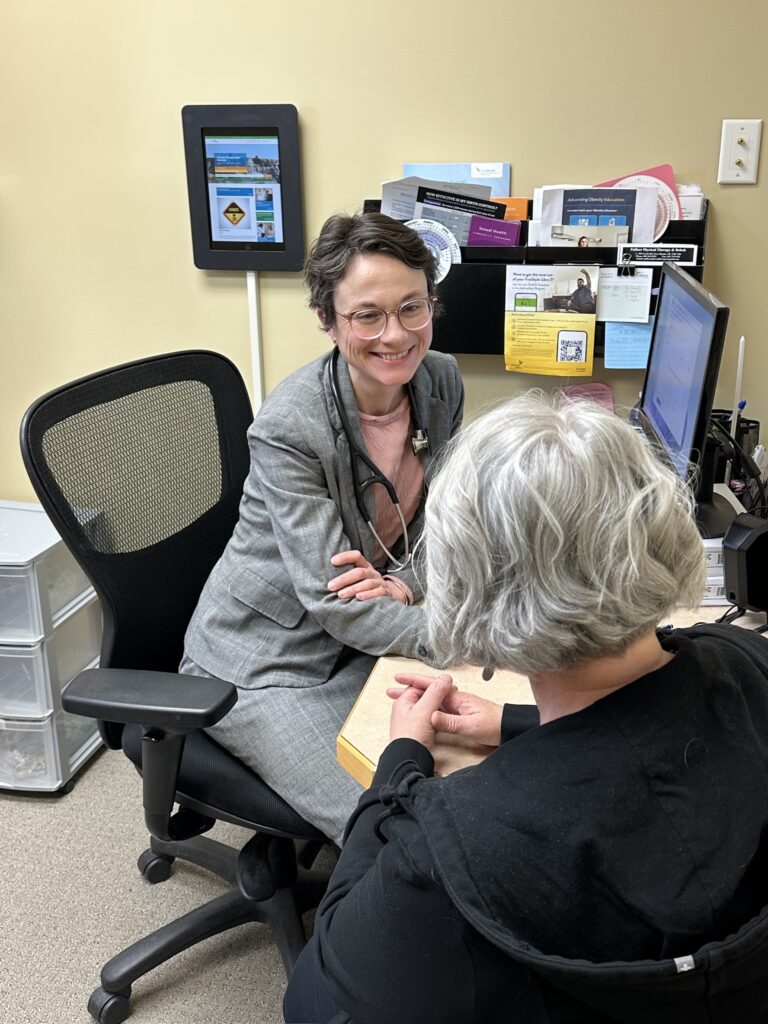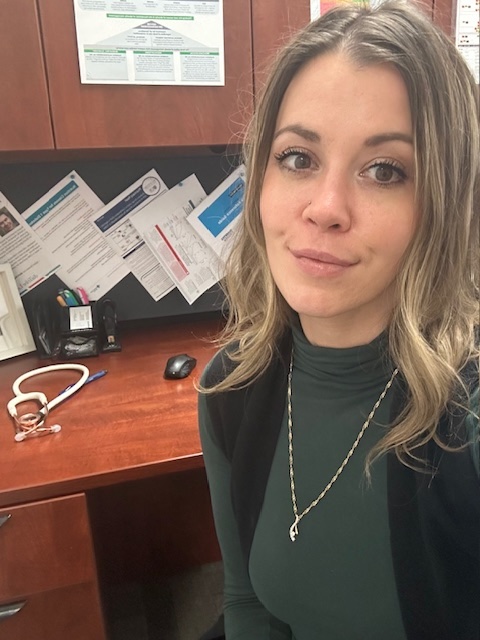RhPAP plays a crucial role in supporting an array of health professionals as they practise throughout rural Alberta.
In this issue, we talk with an nurse practitioner (NP) from Brooks who recently transitioned to an independent practice model, and an Athabasca registered nurse who is close to completing her educational journey to become a NP.

In the community of Brooks, Melanie Snider hopes to make an impact on local healthcare.
The NP recently transitioned to an independent practice model after working in a similar role at the Palliser Primary Care Network for the past 11 years.
Now working out of the South Shore Medical Clinic, Snider has her own patient panel of about 800, with hopes to one day expand to about 1,200.
Operating an autonomous practice has always been on her mind. Previously she worked under physician supervision at the PCN, but didn’t have her own patient panel.
“I guess that level of care has always been my goal, my dream,” says Snider, noting she’s excited to provide her own patients with a health home specializing in women’s care and diabetes.
“I’ve got a great team of physicians and RNs that I work with,” she says, noting it follows a model similar to the PCN where patients access a variety of healthcare services in-house.
It’s important for patients to have “a place where they can come back to [and see] someone that knows them and knows their history,” notes Snider.
To help manage her new practice, she enrolled in an epidemiology course as part of her Master’s of Public Health. She received funding for the $4,000 course through RhPAP’s REAL program.
“It’s like stepping back and seeing what things look like on a global, national, and more community level of public health,” she explains.”
While patients are at the forefront, Snider says it’s important for health providers to also understand the bigger healthcare picture.
“You can treat patients on an individual basis, and probably do a really good job, but until you get to more of the root of what is going on, then I think you are missing a big part of caring for both individuals, but also community.”
Snider has been gradually taking courses as time and funds permit, but REAL helped make it happen earlier than expected.
“It’s been really a good learning experience, and I’m incredibly grateful for the support,” she says.
“It’s hard to make ends meet and to do these extra things, and I couldn’t do it without the support of the REAL program.”

Six hours north, in Athabasca, registered nurse (RN) Krystin Minns has been craving more knowledge.
Minns has worked as a certified diabetes educator for the past 13 years and has also managed the disease personally after being diagnosed with Type 1 diabetes as a five-year-old.
“I find it really interesting. The more people know about their own condition, the better they are able to manage it,” explains Minns.
She began specializing in chronic disease management more than a decade ago as a licensed practical nurse (LPN).
“When I was graduating high school, I didn’t really know what I wanted to do,” admits Minns, who currently works in Athabasca, a community located about two hours north of Edmonton. Along with her role at the Aspen Primary Care Network, she works part time at a diabetes clinic and a high risk foot-care clinic.
“I found my passion in primary healthcare and have expanded my scope as I went,” she says, noting at the time she didn’t realize LPNs could be certified diabetes educators.
Minns went on to become an RN and she is currently studying to become a nurse practitioner, focusing her efforts on internal medicine and chronic disease management.
She recently received $3,000 in funding for two courses through RhPAP’s Rural Education and Advanced Learning (REAL) Program—a boost that helped accelerate her NP education. The program is designed to assist nurses, midwives, nurse practitioners, and allied health professionals working in rural Alberta access continuing professional development and education opportunities.
“Trying to balance finances, a mortgage, children, and all of that on top of the cost of school, it’s a lot,” Minn says. She took on fewer shifts so she could concentrate on her advanced pathophysiology and pharmacology course, along with attending an in-person component in Calgary on advanced health assessments.
NP training is a much different scope than what she learned as an RN and she’s looking forward to applying her new learnings in her community.
“Nurse practitioners definitely have the skill and the ability to help fill in the gaps and attach patients to a consistent care provider, which is great for continuity of care,” she says.
“It’s definitely an exciting time and I feel like I started the [NP] program right when I needed to. I’m pretty excited about what is ahead.”
While she has been advancing her education ever since she first dipped her feet into nursing, Minns says she will be content as an NP working autonomously with her own patient panel.
“I like the nursing focus and the nursing background of it because it’s very holistic. So I think it will be the best fit for me.”
